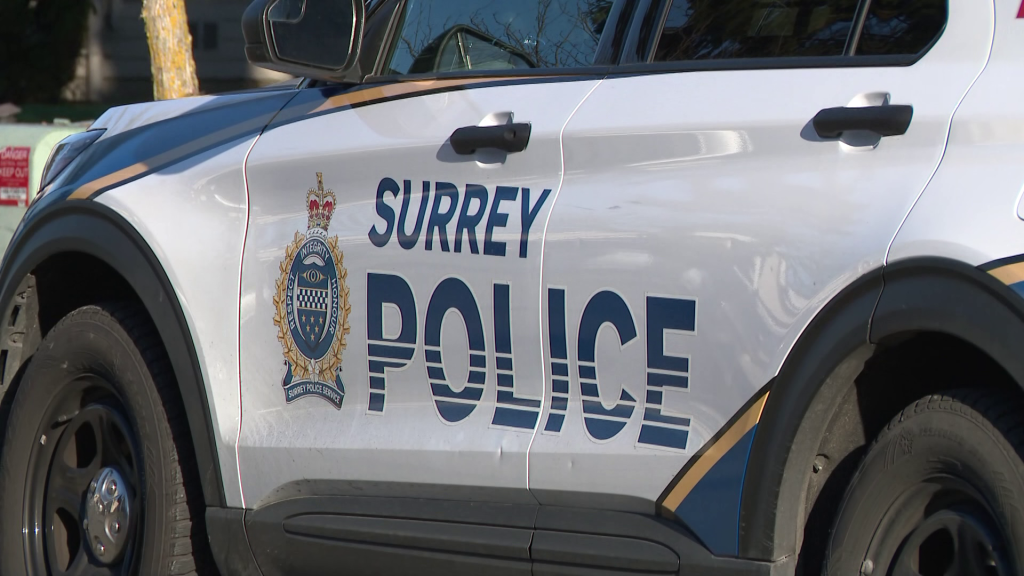Army of moth larvae devouring its way through North Shore trees
Posted July 15, 2021 8:22 am.
NORTH VANCOUVER (NEWS 1130) – Do you remember when the evening air was thick with hordes of moths late last summer?
Well, their offspring are now devouring their way through trees on the North Shore and some other forested areas of Metro Vancouver, and the army of larvae is overwhelming many heat-stressed trees.
You can see the signs on the slopes and streets of the North Shore — little inchworms hanging on threads from hemlock and fir trees, needles and bits raining down, red-tinged forests on the mountainsides, and some trees virtually defoliated.
Seen these little inchworms draped from trees in your neighborhood? Noticed needles and bits coming down? Some trees red-tinged or even defoliated? An army of looper moth larvae are devouring their way through North Shore forests. Get ready for more hordes of moths in a few weeks pic.twitter.com/sJJNrblWAi
— Mike Lloyd ☕️ (@llikemoyd) July 15, 2021
“What we are seeing, especially on the hemlocks but also on the Douglas fir, is larvae from the hemlock looper,” says Richard Hamelin, a professor of forest pathology at the University of British Columbia.
“You’ll recall last year it was the moths that were flying – an army of moths – toward lights, especially on the North Shore. These moths would have laid eggs on the trees and now the eggs are hatched, and these little larvae are hungry.”
“The question we ask ourselves, working in forest health, is what are the big picture impacts of climate change. We know stressed trees have less ability to defend against pests and diseases. It could be that in the future we will see more of these sorts of extreme outbreaks”
— Mike Lloyd ☕️ (@llikemoyd) July 15, 2021
Insatiably so. And they are messy eaters, with constant hail of needles and green bits coming down around the trees – mostly hemlocks but also Douglas firs.
But this year has been even tougher for the trees the larvae infest, and many may not survive.
“These hemlock loopers come and go — they have outbreaks every seven or 10 years and normally they will feed on the foliage, the trees will lose needles, but they will recover,” Hamelin tells NEWS 1130. “The trees I have seen [this year] are not likely to recover because it is a very dry July, and those trees don’t have any needles left. They are probably going to die from these attacks.”
Related articles:
-
North Vancouver moth outbreak no reason to bug out
-
Metro Vancouver moth outbreak ‘great fun’ for indoor cats
Hamelin believes the outbreak has not spread to the same degree to other parts of the province, but is worried that may change in the future as increasingly frequent droughts and heatwaves affect B.C.’s forests.
“For now, it seems to be localized, but the question is whether it will spread or if this is the peak and these moths will eventually die out after the outbreak. There is usually a big build-up and then parasites and predators and diseases affect the moths, and we see the population crash. This is maybe what we are going towards, but we will have to wait and see,” he says.
“What we are asking ourselves – people working in forest health – is what are the big picture impacts of climate change. We know that some of the trees will be more stressed, and stressed trees have less ability to defend themselves against pests and diseases. It could very well be that in the future we will see more and more of these sorts of extreme outbreaks.”
On this North Shore deck, it’s a constant hail of little green needle bits from overhanging hemlock and firs as the larvae munch their way through the trees. pic.twitter.com/yDJWD1ZMfG
— Mike Lloyd ☕️ (@llikemoyd) July 15, 2021
Hamelin points to the recent record-setting temperatures in Metro Vancouver and the immediate impact on the region’s trees.
“In terms of the heatwave, it’s kind of a ‘double whammy’ for the trees. They need needles and their leaves to basically breathe and transpire and stay cool. So, the more they lose needles, the more the suffer. I think it’s a double whammy for these trees to have insect attacks in the middle of a heatwave.”
And even if the looper moth population cycle is peaking, those little larvae will mature into more flying hordes in just a few weeks.
“I’m expecting in August we are going to see a lot of moths. All those little larvae are going to turn into moths so I expect we will see many of them around the lights, just like we did last summer… maybe even worse.”








